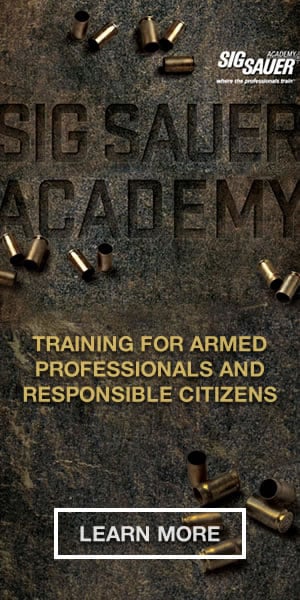The Ruger Mini-14, a scaled down .223/5.56mm semi-automatic carbine based on the .30-06 M-1 Garand and the .308 caliber M-14, hit the market in 1974 as an alternative to the AR15. At that time, and for many years after that, the AR-15 was only available in the full-length rifle version and only from Colt. It would take at least 30 years before the AR-15 would become "America's Rifle".
Weighing in at 6.6 lbs. with its original hardwood stock and having a handy length of 37.25 inches, the original Mini-14 sported a 20 round magazine and the reliability and ease of operation of the original Garand and M-14 gas piston operated action in a much smaller and handier package. The Mini-14 found favor with farmers, ranchers, law enforcement officers, folks interested in self-defense, and people who wanted a rifle that was just plain fun to shoot. The Mini-14 had and has a lot to offer. In addition to its rugged reliability, the design of the Mini-14 is nearly totally ambidextrous in operation. The excellent Garand trigger guard safety can be operated with the trigger finger of either hand, and is difficult to inadvertently click off. The M-14 style magazine release is also easily operated with either hand, and magazines lock into place with a certainty not always found on the AR-15. While the bolt charging handle is on the right side, a lefty can charge a shouldered Mini-14 while keeping full target acquisition and trigger readiness.
If it was such a great design, why isn't its place as prominent in the shooting world as is the AR-15-accuracy or the perceived lack thereof. Early editions of the Mini-14 were lucky to produce 4 inch groups at 100 yards, certainly not on par with most bolt action sporting rifles, or most Colt AR-15's.
I first ran across the Mini-14 in a law enforcement capacity in 1983 while assigned to the Metropolitan Enforcement Group narcotics unit in Licking County. We had picked up a side investigation concerning a satanic worship site located in a deeply wooded area outside Newark. With the movie "Race with the Devil" still relatively fresh in my mind, I wanted some additional fire support available while searching for it. A state trooper friend of mine owned a Mini-14, and loaned it to me for the occasion. The site had an altar, steps carved into the dirt, and remnants of black candle wax dripped in various points around a pentagram. No one was around and no dwellings were nearby. I was glad to have the Mini-14 and two twenty round mags along for the trip and had no concerns about its accuracy potential.
Within two years of that experience, I purchased my own Mini-14. It was the basic model. It was blued steel and the stock was all wood-including the upper handguard-which was later replaced by a metal handguard. The revised upper handguard shields the support hand from barrel heat and from the movement of the operating rod. What was interesting about rapidly firing a full 20 round magazine from a rifle with the all-wood handguards was that wood smoke would actually appear from the upper handguard area. I was personally satisfied with the accuracy potential at any reasonable range for an iron sighted gun. Unfortunately, I had changed law enforcement jobs by that time and my new agency did not permit the use of rifles on the street. Also unfortunately, I traded that rifle away.
A number of years after that, when I worked for the Union County Sheriff's Office, our agency began to move towards fielding patrol rifles. This was right before the federal government's 1033 program that later provide our agency with free M-16's (converted to semi-auto capability only). Our first rifle of choice, provided initially only to sergeants and lieutenants, was the Ruger Mini-14 Ranch Rifle.
By this time the Mini was in its post-Clinton assault weapon ban of 1994 configuration. The public could only get them with five round magazines, even though technically ten round magazines were legal. Ruger didn't want to draw extra government attention to themselves. However, law enforcement could still get 20 round duty magazines.
The other changes to the rifle included a synthetic stock and stainless steel construction. Also the receiver had been modified to accept scope rings. Sights had been upgraded. These particular models, like the original Mini-14's had no flash hiders. I can report in all the firing, I never saw a malfunction-something I can't say about our later M-16's. The Ruger's required no meticulous cleaning and lubrication to keep going. They just ran and ran, and had more than enough practical accuracy to easily handle the rifle qualification course. In fact, when the M-16's became available, several command staff elected to keep their Ruger Mini's, rather than switch to the AR.
Over the years, the Ruger Mini-14 has been produced in a number of variations. Current calibers are .223/5.56mm and 7.62x39 (Ruger Mini-30). For a short time, the excellent 6.8 SPC was also an available caliber. Accuracy has been improved through the use of stiffer, heavier barrels and improved manufacturing techniques. Tactical and Target models are also available. Hardwood or synthetic stocks and blue or stainless construction is available in the Ranch Rifle line. The Mini-30 is available with a flash hider, as are all the Tactical Models.
MSRP's of the various Mini-14 models range from $1000 to $1200. Vance Outdoors often has used LE rifles available for purchase at a much lower price. If you are looking for a compact, reliable 5.56 (or 7.62x39) carbine packed with a lot of utility and a lot of fun, and you aren't set on an AR, take a look at the all-American made Ruger Mini-14. You might be pleasantly surprised.


